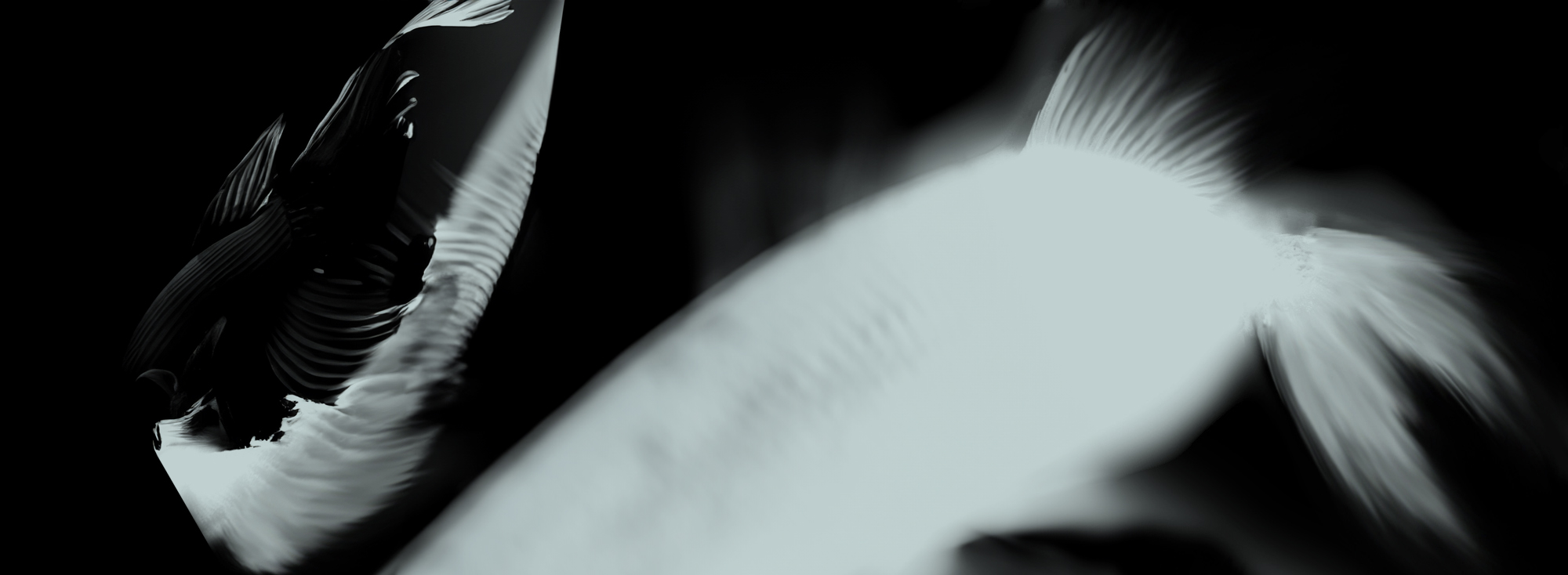Rule 4 | Work with open lines
Lesson 1 | Open spots
40 min.
The fourth rule is the most convenient rule of all, because all we have to do is nothing – leave it open! Because our brain perfects every picture, and even more beautifully than we could sketch it.
Step 1 | Dive in to wold of carps and koi.
Observe the images below and try to find out „how much fish“ you need to see, to know, that’s a fish.
Maybe you want to know more about the background of the fish and their importance … so you might read the text further down as well.
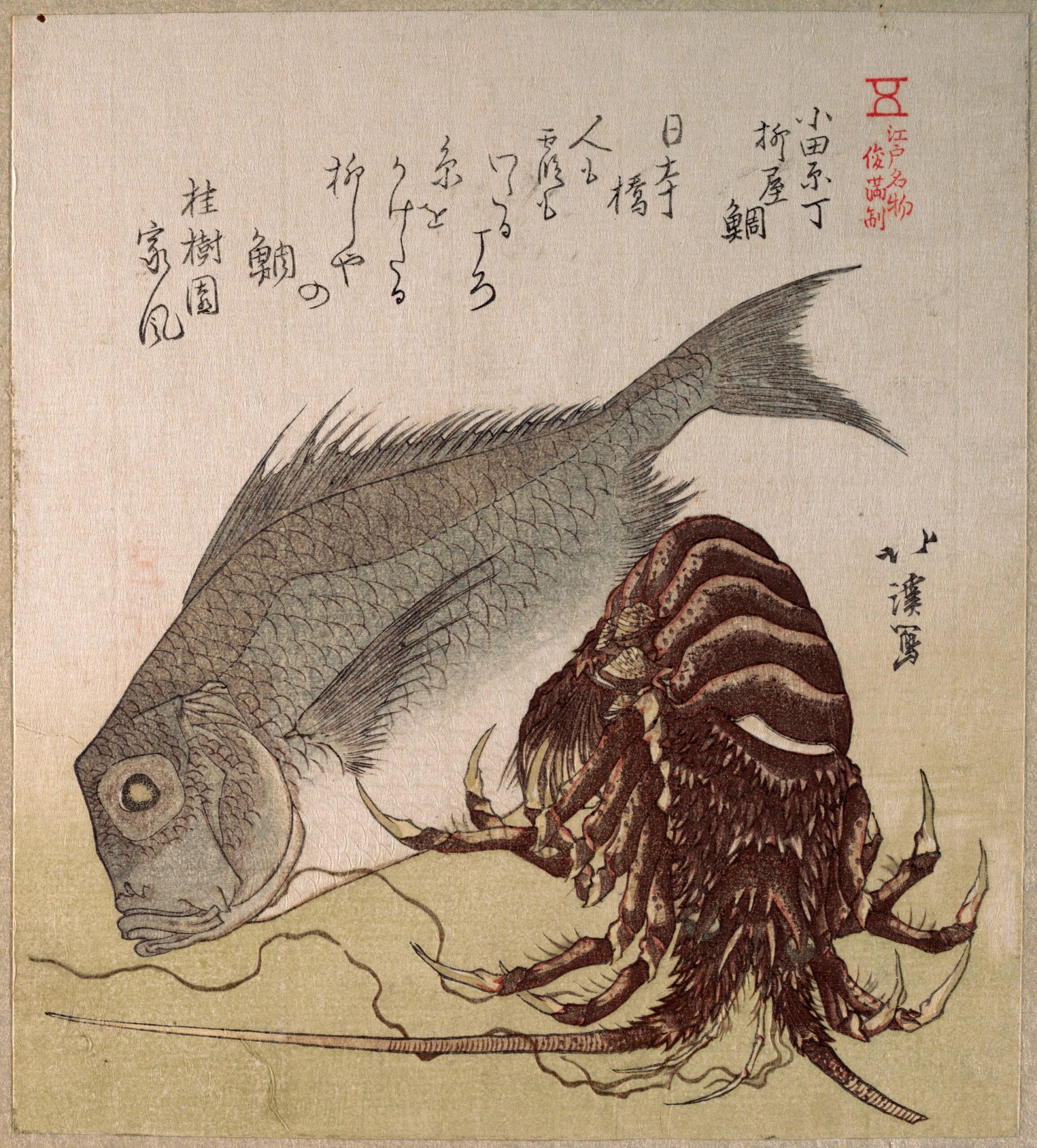
Tai Fish and Lobster; Specialities of Yanagiya in Odawara-cho
Totoya Hokkei Japanese
19th century
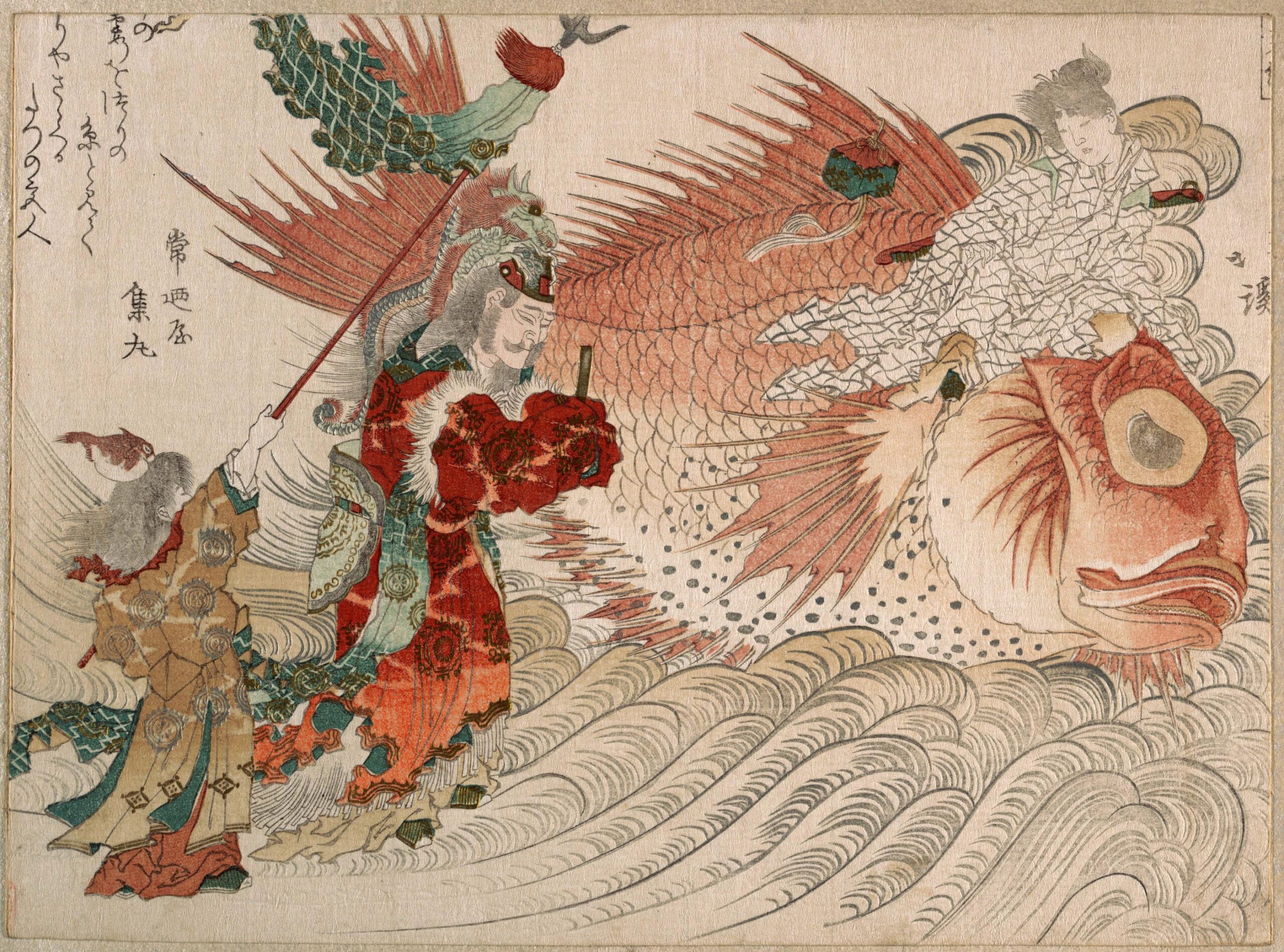
Urashima Taro Going Home on the Back of a Tai Fish, the King of the Sea Seeing Him Off
Totoya Hokkei Japanese
19th century
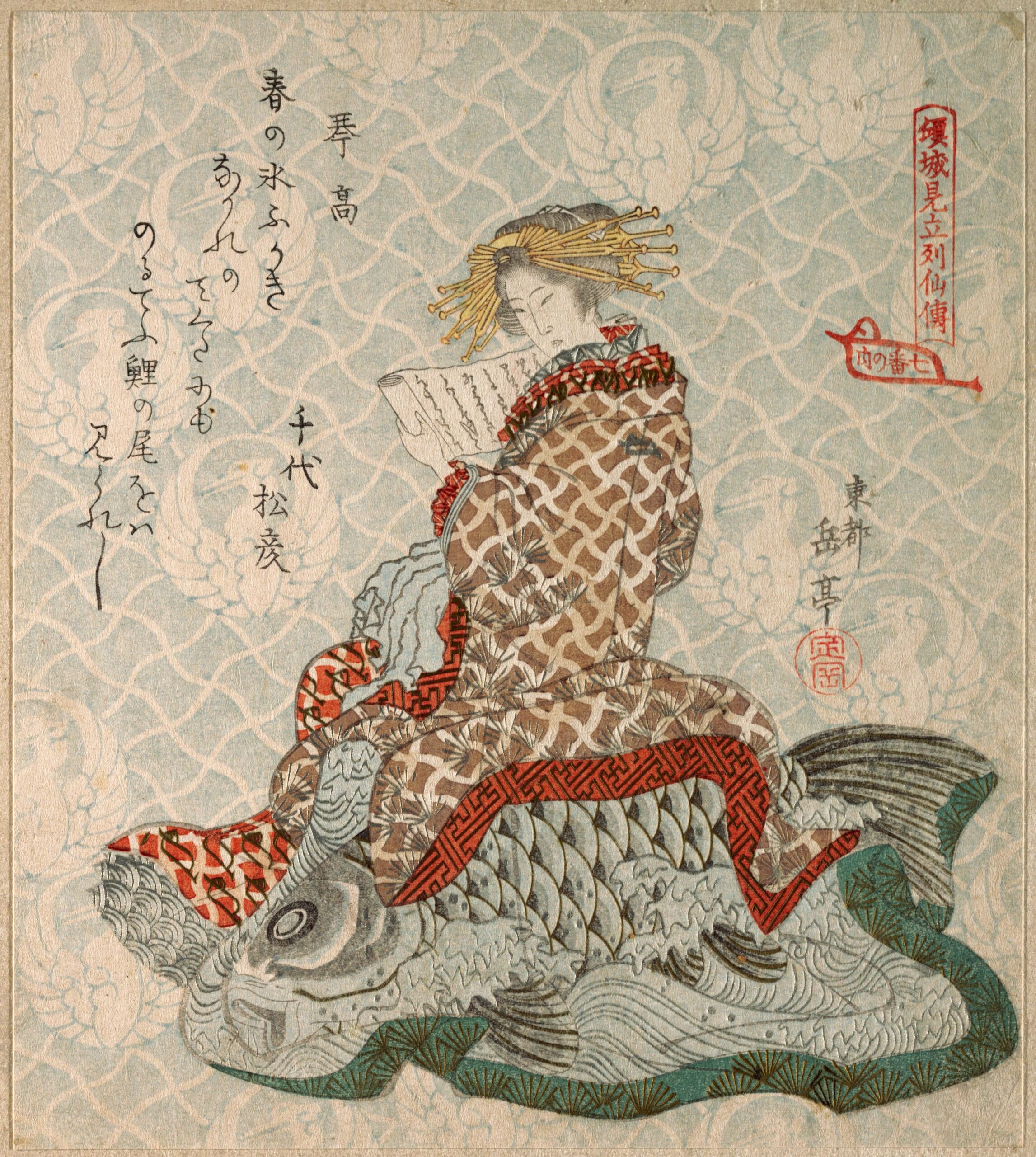
Courtesan Seated on a Carp
Courtesan Seated on a Carp
Yashima Gakutei Japanese
19th century
Step 2 | See in the video how you can leave open spots in your drawing.
Observe the images above and try to find out „how much fish“ you need to see, to know, that’s a fish.
When drawing, it is important to add depth and dimension to the picture by leaving open spaces rather than closing everything off with lines. Open spaces allow the viewer of the artwork to be naturally immersed in the image and give them space to breathe.
By adding open spaces to your drawing, you can also create a sense of movement and energy by drawing the viewer’s eye to certain areas or directing it in a certain direction.
Open spaces can also help to increase the complexity and detail of the artwork by allowing the viewer to navigate between and explore the different elements of the artwork.
In summary, adding open spaces to your artwork can help make it more interesting, dynamic and inviting, giving the viewer a greater sense of freedom and opportunity for discovery.
Script
Hello, happy sketching!
An exercise with open lines. Our protagonists are fish. Go to Turbosquid.com and look for the fish of your taste, it should be a 360 de-gree rotating application.
Here I have such a fish.
The task is briefly explained. Sketch the fish. But let at least 5 spaces open where you think
1. a gap would be ok.
2. Where light reflects,
3. Where you suggest further texture
4. Where you want to show speed
5. Where you want to inhance contrasts.
First of all, open spots are difficult places where you can use this rule particularly well.
Because there is a Gestaltgesetz, the law of continuity, which concerns us very much in sketching.
Continuing on a path is the instinctive reaction of the eye when it receives a directional impulse. In the diagram here we perceive two curves: one runs from A to B and the other from C to D. Closely related to the law of continuity is the law of smooth progression. We tend to „continue“ contours that have smooth transitions, i.e. no abrupt changes of direction, bends, or angles. Because the line from A to B is smoother than from A to C, we see it as such. This helps us to see objects together and apart correctly.
Now we come to the scales: The law of similarity takes up the observation that optical stimuli with the same or similar structure are classified as belonging together.
We do not draw all the scales. 10-20 scales are enough, then the observer has understood… ah, the fish has scales, and that is natural. So we rely on our optical memory … and this is always better than any sketch.
You don’t have to draw everything, it’s enough to give the eye the hint. And that’s it.
Wherever the finished form can be completed by the eye, i.e. where the law of continuity applies, you can leave the sketch open.
Where the optical memory completes, this is considered the best, this is also called induction. This means that the viewer supplements the missing pictorial information with his visual knowledge. Here, however, one must always refer to the cultural background.
As this way of seeing is used every day by all of us, this is not a problem at all. On the contrary: it allows the viewer to bring in himself, which challenges and delights him. They feel mirrored in the picture.
The viewers perceive „nonfinito“ pictures as a beautiful challenge. No wonder artists everywhere around the globe take advantage of this.
***
Let’s see the advantages in this drawing.
In a drawing, intentionally leaving some parts of the drawing blank, without any marks or shading is very often done. These open areas serve several purposes:
To create contrast
Leaving open areas in a drawing can help to create contrast and emphasize the areas that are shaded or detailed. The blank areas pro-vide a visual break for the eye, and draw at-tention to the areas that are more important or detailed.
To suggest light
Open areas can also suggest areas of light in the drawing, particularly if the areas around them are shaded or darker. This can create a sense of depth and dimension in the drawing, and help to create the illusion of light and shadow.
To suggest texture
Leaving open areas can also suggest the tex-ture of the surface being depicted. For exam-ple, leaving blank areas in a drawing of a rough stone or brick wall can suggest the rough texture of the surface.
To suggest movement
Leaving open areas can also suggest move-ment or flow in the drawing. For example, leav-ing open areas in a drawing of water can sug-gest the movement and flow of the water.
In terms of where to leave open areas in a drawing, this will depend on the subject matter and the artist’s personal style. However, gen-erally, open areas are left in areas of the draw-ing that the artist wants to emphasize, such as the focal point of the composition or the areas that are meant to suggest light or texture.
So, eyes open – lines also open
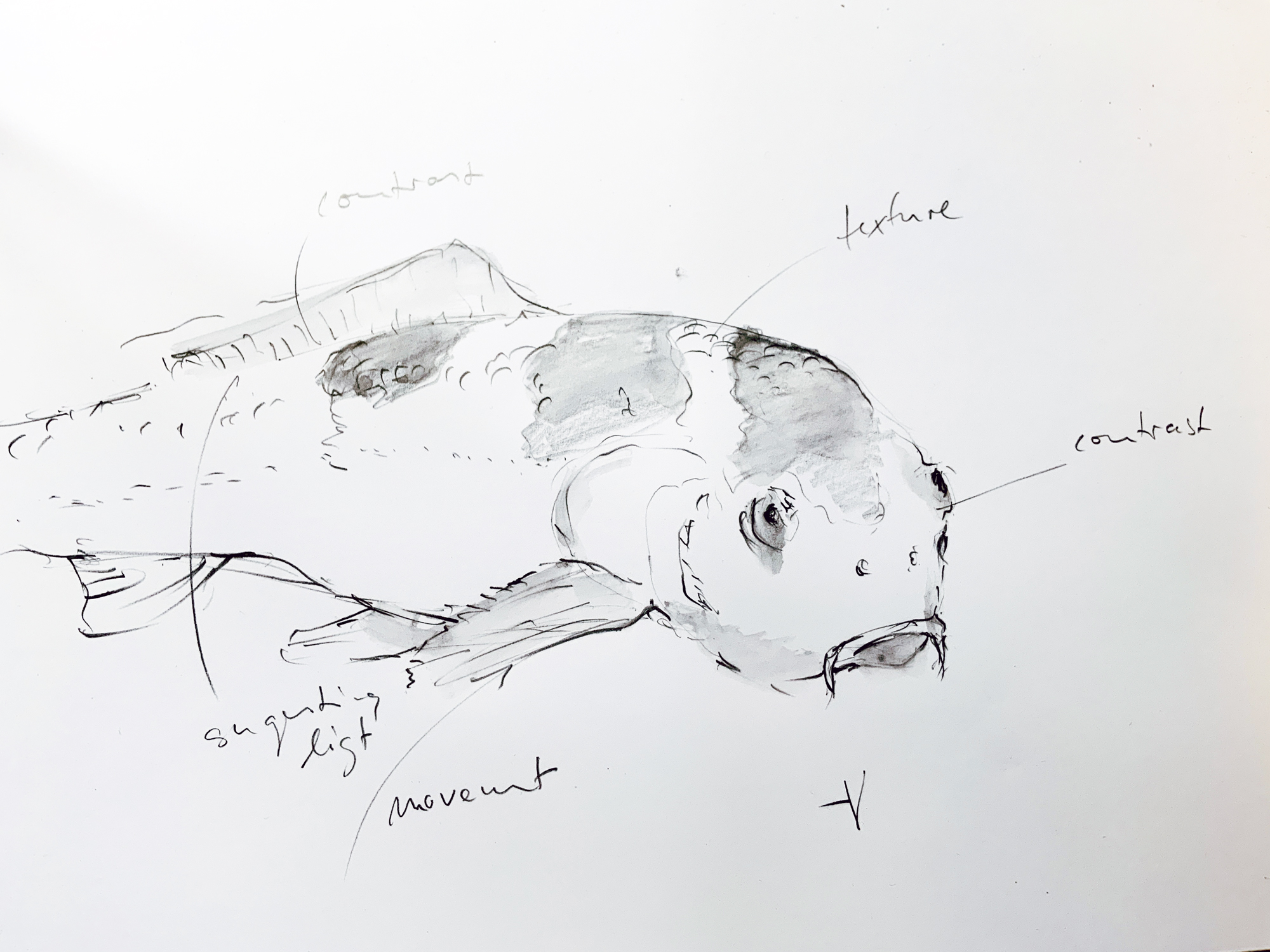
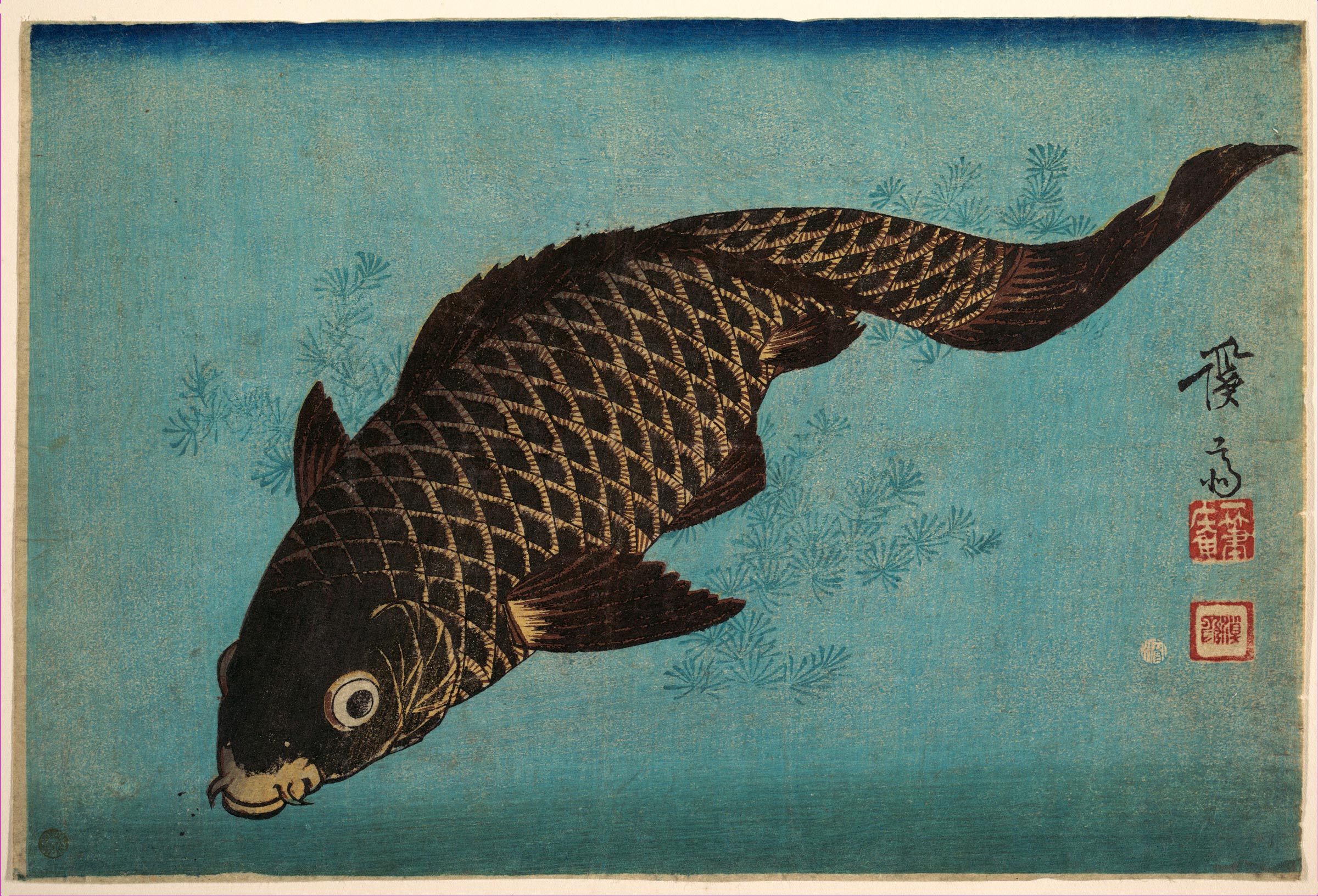
These carp prints are not sketches. So the rule of leaving them open does not apply to them. They serve us as „realistic“, full-scale fish paintings. As works of art, they have already gone through the artist’s process of perception, which means they are aestheticized and reduced at the same time. They contain all the terms of Asian art and are sublime. We use them as concise sources of ideas and form.
About carp fishes, or Koi
Carp fishes, or „koi“ in Japanese, have a special cultural significance in Japan, which is why they are widely loved and appreciated by the Japanese people.
Symbolism: In Japan, koi fish are often associated with perseverance, determination, and strength. The Japanese have a long-standing tradition of using koi fish in art, literature, and even tattoos to symbolize these traits. The legend of the „Dragon Gate“ is particularly famous, which tells the story of a koi fish that swam upstream to reach a dragon gate, where it transformed into a dragon as a reward for its perseverance.
Aesthetics: Koi fish are known for their vibrant colors and beautiful patterns, making them a popular decorative element in Japanese gardens and ponds. The Japanese have developed a keen eye for selecting and breeding koi fish with desired color and pattern variations, resulting in a vast array of koi types and subtypes.
History: The cultivation and appreciation of koi fish have a long history in Japan, dating back to the Edo period (1603-1868). Koi fish were originally bred for food, but over time, they became increasingly popular as ornamental fish, particularly among the Japanese aristocracy.
Relaxation: Watching koi fish swimming in a tranquil pond or water feature can be a relaxing and soothing experience. Many Japanese people enjoy spending time near koi ponds as a way to unwind and connect with nature.
Overall, the combination of symbolism, aesthetics, history, and relaxation makes koi fish a beloved and cherished element of Japanese culture.
ASSIGNMENT | Sketch some fishes and let spots open.
To upload, use the buttons further down.
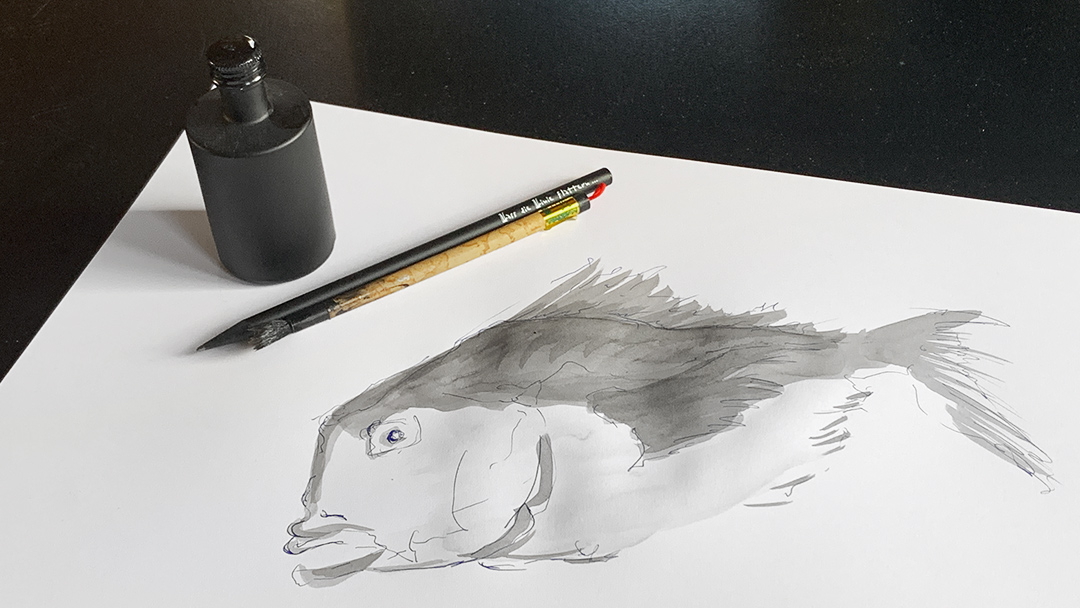
Free trial
Try one lesson and decide if you want to do the whole course. Click for the free trial ...
Certificate
If you want to achieve a certificate that proves your sketching skills, get all your information here ...

